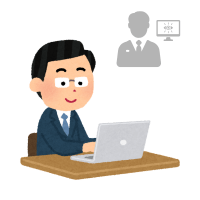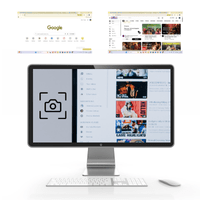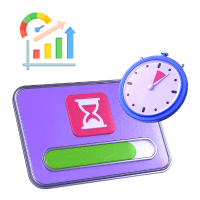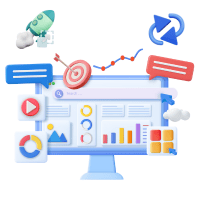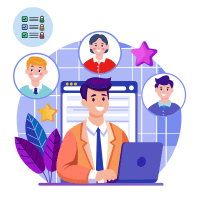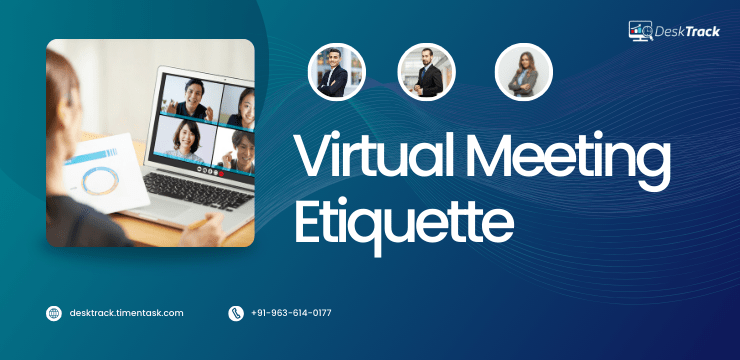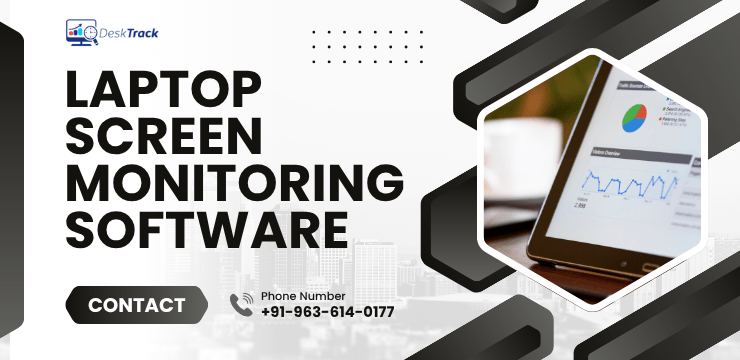
In the post-pandemic world of 2025, hybrid and remote work have become mainstream. With employees dispersed across homes, co-working spaces, and international locations, employers are more reliant than ever on laptop screen monitoring software to ensure productivity, secure sensitive data, and maintain regulatory compliance. These tools capture user screenshots, track app usage and URLs, record keystrokes, and log idle time. Yet, their use increasingly raises questions over legality and ethics, especially when privacy laws and employee trust hang in the balance.
This blog unpacks whether laptop screen monitoring software is both legal and ethical today. You’ll find detailed insight into global legislation (like GDPR, CCPA, UK Data Protection, and India’s privacy reforms), plus the differences across jurisdictions in 2025. We explore ethical considerations, like surveillance vs. support, impacts on morale, and balancing transparency with workplace oversight. You’ll also get practical guidance on crafting responsible monitoring policies, obtaining consent, choosing respectful configurations, and using data for coaching—not punishment.
Review real-world examples showing when screen monitoring helped productivity—and when it backfired due to poor communication or hidden tracking. Finally, we’ll highlight five tools—DeskTrack, ActivTrak, Teramind, Insightful, and Time Doctor, that embed legal compliance and privacy features. By the end, you’ll have clear criteria and best practices to implement laptop screen monitoring software ethically, effectively, and in line with 2025 standards.
Is Laptop Screen Monitoring Software Legal in 2025?
Legal clarity is essential before implementing any form of digital oversight. This section maps the key components of legality—especially how laptop screen monitoring software fits within privacy regulations and workplace transparency.
1. What Data Is Typically Collected?
Monitoring tools commonly capture:
- Screenshots (regular or triggered by idle state)
- Keystroke patterns or activity timestamps
- URLs visited and duration on sites.
- Applications used and active window data
- Idle vs. active time tracking
Understanding the extent of captured data is vital. Screenshots may contain personal content or sensitive information, mandating stricter legal protections and storage protocols.
2. Requirements for Employee Consent
In many jurisdictions, employers must secure:
- Explicit written or digital consent before tracking
- Clear onboarding disclosures about monitored activities
Consent ensures transparency and safeguards your organization from legal challenges. It also demonstrates respect for employee autonomy.
3. Mandatory Disclosure & Transparency
Organizations must:
- Publish clear monitoring policies
- Communicate what is monitored, why, how long data is stored, and who has access
Open disclosure fosters trust. When employees know what’s tracked and why, your monitoring isn’t seen as covert surveillance.
4. Regional Legal Frameworks
Privacy laws in 2025 include:
- EU GDPR: Requires lawful basis, minimization, and access rights
- California CCPA: Grants consumers the right to know and delete data
- UK Data Protection Act: Mirrors GDPR-like requirements post-Brexit
- India’s PDP Bill (pending or enacted): Data fiduciary obligations
Each region imposes specific obligations. Global employers must tailor monitoring deployment to local rules to avoid penalties.
Risks of Non‑Compliance
Failing to comply can lead to:
- Regulatory fines (GDPR fines up to 20 Million Euros or 4% of global turnover)
- Lawsuits from employees or unions
- Reputational damage and internal distrust
Implementing monitoring without consent or transparency risks both legal liability and team morale crises.
Read Also: Best Application Monitoring Tools in 2025: Top 10 Picks for Performance & Uptime
Ethical Considerations in Employee Monitoring
Legal compliance alone doesn’t guarantee ethical operations. Ethical usage of laptop screen monitoring software depends on intent, method, and communication.
1. Surveillance vs. Performance Support
Monitoring should empower—not penalize:
- Frame monitoring as support (e.g., identifying inefficiencies)
- Avoid punitive or secret monitoring methods that feel punitive.
When employees see tools as aids for improvement, engagement increases; if tools feel punitive, trust erodes.
2. Impact on Morale and Mental Health
Excessive or poorly communicated tracking can produce:
- Anxiety, stress, and perceived distrust
- Burnout due to constant oversight
Ethical use limits intrusive features and emphasizes open dialogue about purpose and usage.
3. Dangers of Over‑Monitoring
Avoid:
- Continuous screen recording
- Detailed keystroke logging or personal app tracking
Overreach feels invasive. Instead, track only productivity-related activity and respect personal privacy (e.g., blurred screenshots).
4. Inclusivity in Policy Creation
Policies built alongside staff input:
- Encourage employee involvement in policy drafts
- Offer feedback loops for potential changes.
Co-creation fosters buy-in—people who help craft policies are more accepting of them.
5. Using Data for Coaching, Not Punishment
Data collected should guide:
- Productivity coaching sessions
- Workload adjustments
- Role-based feedback
Transform monitoring into a tool for positive change, rather than a means of reprimand.
Real-World Use Cases of Laptop Screen Monitoring Software
Monitoring isn’t one-size-fits-all. Organizations use laptop screen monitoring software for different goals depending on their industry, workforce structure, and data sensitivity.
1. Remote & Hybrid Team Management
Used to:
- Track attendance, active hours, and task focus
- Ensure fair performance reviews for remote employees.
Employers can maintain visibility into workloads and accountability without relying on micromanagement.
2. IT Security & Insider Threat Detection
Used by:
- Financial institutions, law firms, or data-sensitive sectors
- To detect unusual login times, data transfers, or app usage
Screen monitoring serves as a vital tool for preventing breaches and insider threats in high-security environments.
3. Freelance & Contractor Oversight
Used to:
- Ensure billable hours align with real work output
- Provide visual proof of completed work.
Agencies and clients use screen monitoring to verify delivery quality and protect both parties from disputes.
4. BPO & Call Center Quality Control
Used for:
- Verifying script adherence and client interactions
- Real-time coaching or support alerts
In high-volume support centers, screen monitoring helps maintain quality standards without disrupting workflow.
5. Educational Institutions & Exams
Used by:
- Online universities or remote proctoring services
- To monitor screen activity during assessments
Helps prevent cheating during remote exams, ensuring fairness and credibility.
Best Practices for Using Laptop Screen Monitoring Software Responsibly
To balance productivity with privacy, organizations must adopt thoughtful practices while implementing laptop screen monitoring software.
1. Communicate Clearly & Early
Best practice:
- Inform staff during onboarding and via policy handbooks
- Hold Q&A sessions before implementation.
Transparency builds trust. When people understand what’s being tracked and why, resistance reduces significantly.
2. Customize Permissions Based on Role
Best practice:
- Avoid one-size-fits-all setups
- Enable/disable tracking features by department or seniority.y
Tailoring monitoring to roles ensures respect for boundaries while maintaining oversight where it’s most needed.
3. Blur Sensitive Data Automatically
Best practice:
- Blur screenshots showing personal messages or private portals
- Redact content not relevant to the work activity
This protects employee privacy and reduces legal exposure to personally identifiable information (PII).
4. Give Access to Monitoring Data
Best practice:
- Allow employees to view their productivity reports
- Enable opt-in analytics for self-tracking
Letting employees see their data turns tracking into a shared performance improvement tool.
5. Review Policies Quarterly
Best practice:
- Reassess usage logs and legal compliance
- Adjust based on team feedback and tech developments.
Staying current ensures your system stays ethical, relevant, and non-invasive over time.
Top Laptop Screen Monitoring Software in 2025
Here’s a look at five top-rated laptop screen monitoring software tools known for balancing visibility and privacy.
1. DeskTrack
Features:
- Real-time screen capture and activity logs
- Project/task time mapping and idle alerts
- Blurred screenshots and consent-based tracking
DeskTrack is built for hybrid teams, offering privacy-friendly features like blurred captures and customizable roles. It’s ideal for both SMBs and enterprises.
2. ActivTrak
Features:
- Productivity scoring, activity insights, and rule-based alerts
- No invasive keystroke logging or webcam access
- Great for coaching-driven management
ActivTrak promotes ethical tracking with a focus on analytics and improvement, not micromanagement.
3. Insightful
Features:
- Real-time activity tracking and optional screenshots
- Project-based breakdowns and team trends
- Stealth and transparent modes
With flexible deployment options, Insightful supports use cases ranging from employee productivity to client time tracking.
4. Teramind
Features:
- Advanced behavior tracking and data loss prevention (DLP)
- Screen recording, email, and file activity audits
- Granular role controls and compliance modes
Teramind is ideal for high-security workplaces, offering full audit trails and insider threat protection.
5. Time Doctor
Features:
- Time tracking with screen monitoring and pop-up alerts
- Client dashboard for freelancers and agencies
- Integrations with project management tools
Time Doctor blends time tracking with lightweight screen captures, perfect for distributed teams and contractors.
Real-World Outcomes: Success & Failure Stories of Laptop Screen Monitoring Software
When done right, laptop screen monitoring software can build stronger, more productive teams. Done poorly, it can damage culture, trust, and even legal standing. Let’s explore both ends of the spectrum.
1. Success Story – Boost in Remote Team Productivity
A mid-sized marketing agency implemented monitoring for its remote workers.
- Used blurred screenshots and transparency to gain team buy-in
- Noticed a 25% increase in billable hours tracked accurately
By using the software to empower rather than spy, they created a healthier, more focused remote work culture.
2. Success Story – Proactive Data Security
A healthcare IT firm used monitoring to detect suspicious access.
- Detected irregular login attempts and flagged them in real-time
- Prevented a potential breach of confidential patient data
Screen monitoring helped the company act quickly and avoid costly HIPAA violations.
3. Failure Story – Legal Backlash from Secret Monitoring
A small startup installed screen tracking tools without employee consent.
- Faced a lawsuit under GDPR guidelines
- Lost valuable talent and suffered PR damage
Lack of communication and consent led to major backlash that hurt the company’s credibility and finances.
4. Failure Story – Demotivated Workforce
A company used monitoring as a punishment tool.
- Employees felt micromanaged and stressed.
- Attrition rose by 30% over three months.
Without transparency and fairness, even the best tools can destroy morale.
5. Mixed Story – High Gains, But Poor Rollout
A call center improved KPIs but ignored employee input.
- Productivity spiked 40%, but turnover also increased.
- Eventually restructured their policy with team feedback.
Software success isn’t just about performance—it’s also about adoption, ethics, and feedback.
Read Also: Workplace Tracking vs. Time Tracking Tools: What’s the Difference?
How to Choose the Right Laptop Screen Monitoring Software?
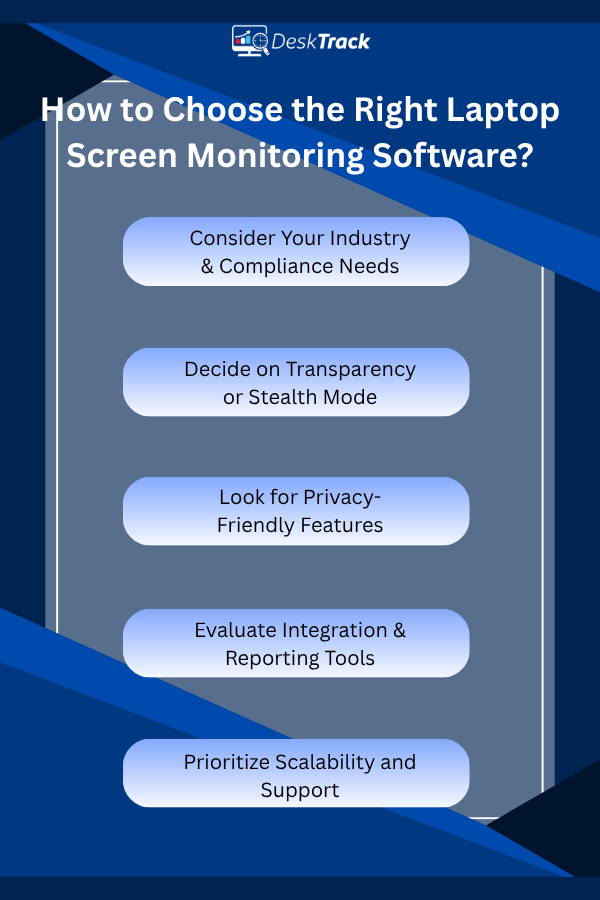
Choosing the right tool isn’t just about features—it’s about aligning with your culture, legal obligations, and team goals.
1. Consider Your Industry & Compliance Needs
Ask:
- Do you work with sensitive data (e.g., finance, healthcare)?
- What laws do you need to comply with (GDPR, HIPAA, etc.)?
Your sector determines the type of tracking you can implement legally and responsibly.
2. Decide on Transparency or Stealth Mode
Options:
- Transparent mode: Best for employee trust and collaboration
- Stealth mode: Used in high-risk environments with proper legal grounding
The mode you choose should match your goals and legal constraints.
3. Look for Privacy-Friendly Features
Top features to consider:
- Blurred screenshots
- Customizable permissions
- Clear audit logs
These features show you care about ethics while still getting the data you need.
4. Evaluate Integration & Reporting Tools
Must-have capabilities:
- Integrate with tools like Slack, Trello, or Jira
- Custom dashboards and real-time alert
Good integrations improve workflows, not disrupt them.
5. Prioritize Scalability and Support
Ask:
- Will this tool scale with my business?
- Does the vendor offer live support and onboarding?
Avoid tools that look good on paper but fall short when your team grows.
Why DeskTrack Is the Best Laptop Screen Monitoring Software in 2025
When looking for the most balanced, privacy-respecting, and feature-rich laptop screen monitoring software, DeskTrack stands out.
Why Choose DeskTrack?
- Real-time tracking, blurred screenshots, and detailed project reports
- Role-based access and client dashboards
- GDPR- and DPDP-compliant monitoring features
- Easy onboarding and integration with tools like Asana, Trello, and Slack
- Transparent reports for employees and managers alike
DeskTrack doesn’t just monitor—it empowers. Whether you’re managing a remote team, improving client accountability, or securing sensitive data, DeskTrack gives you control without overstepping boundaries.
Conclusion
In 2025, laptop screen monitoring software isn’t just a trend—it’s a response to the evolving hybrid work culture, increased cybersecurity risks, and productivity demands.
When used ethically and transparently, it helps companies stay efficient, secure, and fair. But when misused, it can create legal issues and damage trust. The key lies in choosing the right tool, setting the right policies, and fostering a workplace built on clarity—not control.
Embrace it wisely, and you’ll unlock the full potential of your remote and in-office teams.
Frequently Asked Questions (FAQ)
Q1. Is Laptop Screen Monitoring Legal in 2025?
Ans. Yes, but only if done with proper notice and consent. Different regions have varying privacy laws like GDPR, CCPA, and India’s DPDP Act.
Q2. Can Employees Say No to Being Monitored?
Ans. In many jurisdictions, employees must be informed and can legally refuse in some cases, especially in the EU. Consent and policy transparency are crucial.
Q3. Will Monitoring Reduce Trust in My Company?
Ans. It can—if implemented poorly. However, if you’re open about what’s being tracked and why, many employees are fine with it.
Q4. How Do I Make Monitoring Ethical?
Ans. Use clear policies, inform employees, offer opt-ins where possible, and avoid excessive tracking (like webcam use or keystroke logging).
Q5. What’s the Best Laptop Screen Monitoring Software?
Ans. DeskTrack, ActivTrak, Teramind, Insightful, and Time Doctor are strong choices in 2025, each with different strengths.



